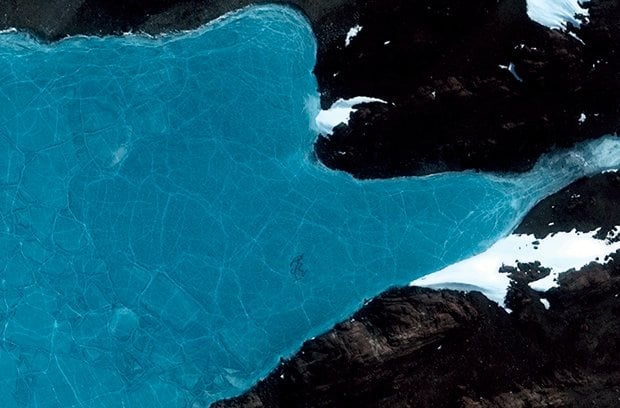Antarctic artwork seen from space

ARTISTS ARE KNOWN FOR going to extremes: Van Gogh cut off his ear, Damien Hirst preserved a dead cow and now Australian artist Andrew Rogers has braved the Antarctic and landed on an ice runway, all in the name of art.
Andrew, from Melbourne, has spent the past 13 years working on a major land art project, titled Rhythms of Life, and has just returned from traversing the Antarctic to put the final piece to the project.
“We landed on an ice runway at Dronning Maud Land,” he says. “On an ice airstrip you’re not allowed to use the brakes that you’re not normally allowed to use on a plane, so you only use the reverse thrust to stop the plane. The plane can travel two and a half kilometres down the runway without stopping.”
Andrew made the difficult trip to the Antarctic to create the final sculpture in the Rhythms of Life project, which has already involved more than 6700 people in 13 countries across six continents. The aim of the project is to form a chain of massive stone sculptures (or geoglyphs) around the globe, 46 of which have already been created.
The 47th structure created in the Antarctic was created from moraine dust, which is what’s left over after a glacier has moved through and crushed rocks over thousands of years. It is the last link in the chain of this land project.
“It’s been 13 years waiting to get to the last continent, I’m pleased that we’ve done it,” he says. “We left this until the end, probably because it was the most difficult mentally to come to grips with, because the idea of this is that I didn’t want to leave a permanent scar on the land. I had to think and work out how we would create this image so it would disappear.”
The sculpture will be swept up in a few weeks and anything’s that left over will disappear as it was created on an iced lake that will turn to water.
The entire work was photographed by a satellite 450 km above the Earth.
RELATED STORIES

